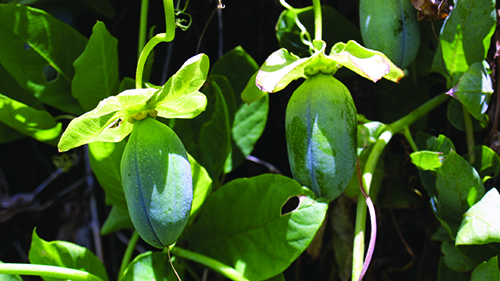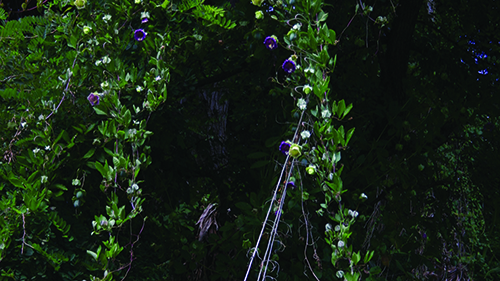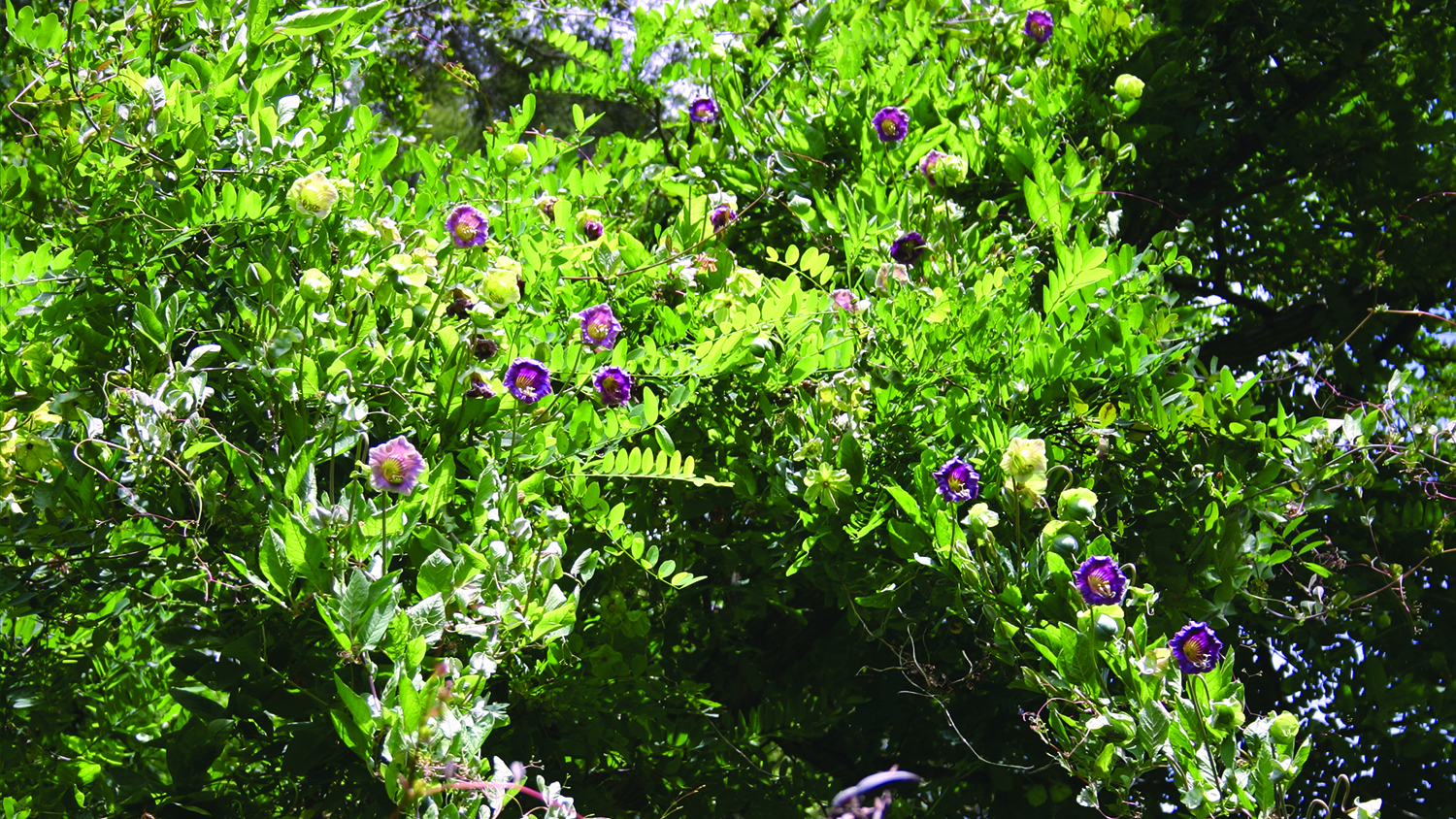| Management programme |
| Eradication |
| Objectives |
| Reduce the level of infestation of cathedral bells to zero density within the Waikato region. |
| Impacts |
| Economic, biodiversity, social and cultural wellbeing, amenity/recreation |
Cathedral bells, native to Central and South America, is a fast-growing evergreen climber (to 10 metres). The long-lived vines can grow over trees and shrubs forming a dense canopy that smothers desirable vegetation and impedes access to areas.

What does it look like?
Cathedral bells is a perennial woody vine.
Flower
- Bell-shaped flowers, 6cm-7cm long.
- Flowers are green and smelly when young, turning deep purple once they’ve shed their pollen.
- Flowers present December to May.
Fruit/seeds
- Fruits are hard, oval green capsules (6cm-10cm long).
- Fruit ripens in autumn.
- Each capsule splits to release numerous flat, papery winged seeds.
Leaves/stems
- Consist of three pairs of oval leaflets, including a small pair at the leaf base.
- Each leaflet is about 4cm-12cm long by 2cm-5cm wide.
- Leaflets are dark green above, whitish underneath and have a brown stalk.
- Compound leaves are arranged alternatively along stems.
- Stems are purplish and angled, with hook-like branch tips.
Why is it a pest?
Cathedral bells is a vigorous, fast growing perennial climber with stems to 10m long. Its long-lived vines can establish and grow along riverbanks, forest margins and roadsides, in shrubland, open areas, hedges, and shelterbelts. It forms a dense canopy over trees and shrubs that smothers native vegetation and prevents seedling establishment. Walls of cathedral bells vines can obstruct access to areas.
Cathedral bells can grow well under a range of environmental conditions including shade, drought, wind, salt, and differing soil types. It produces large numbers of viable seeds that can be dispersed by wind and water. However, new plants can also establish from stem fragments, and the plant is most often spread via dumping of garden waste or soil movement. .
It is currently largely restricted to a few sites adjacent to the Waikato River at Karāpiro and Ngāruawāhia, in Hamilton City, at Thames, Cooks Beach and Whangamata on the Coromandel, and in the King Country near Te Mapara and Ōtorohanga.
Control methods

If you see this weed on your property, do not cut or treat it. Call 0800 800 401 to report it to your local biosecurity pest plant officer.
More information
Advice
For additional information and advice on cathedral bells, call our pest plant staff on freephone 0800 800 401.
Publications
The following publications are available for download or from Waikato Regional Council. Contact us to request a copy (freephone 0800 800 401).






To ask for help or report a problem, contact us
Tell us how we can improve the information on this page. (optional)